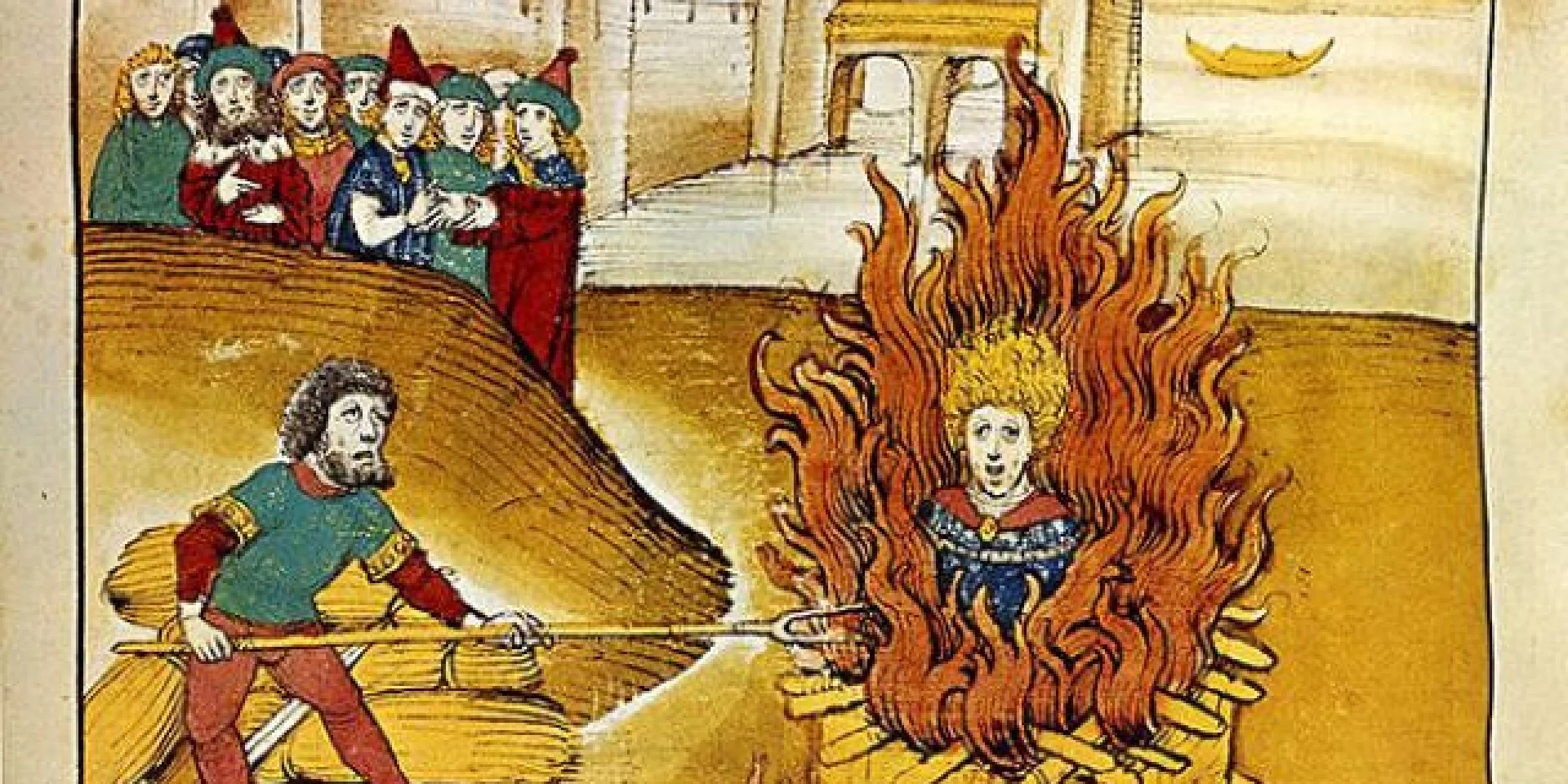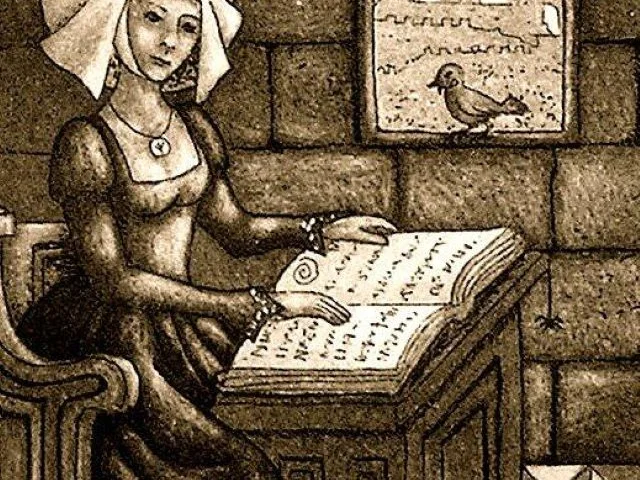Marguerite Porete (circa 1250 – 1310) was a Christian mystic writer and poetess. Her book Le Miroir des simples âmes anéanties, exploring the love of God, shocked the Church of the time. Today, it is increasingly regarded as a major work of the Middle Ages. Originally from the County of Hainaut and probably Valenciennes, she was born around 1250. We have no information about her family or her childhood, but Marguerite demonstrated a solid theological and secular culture.
Marguerite is considered to be a beguine, a type of woman generally single or widowed, who formed lay religious communities.
Very widespread in Flanders, beguines live according to a monastic rule, but take no perpetual vows. They live in beguinages (as can be seen in Bruges…), made up of small individual houses set around a central garden and a church.
The beguines enjoyed great freedom, freeing themselves from male domination while continuing to live in the world, within the cities. What’s more, being laywomen, they were not under the authority of the Church, and this feminine freedom quickly displeased the institution.
Around 1290, Marguerite Porete published her book, Le Miroir des âmes simples anéanties et qui seulement demeurent en vouloir et désir d’amour. It deals with divine love. She wrote this mystical work of theology and poetry in the vernacular (langue d’oïl) to make it more accessible, rather than in Latin as was the rule.
This highly avant-garde book quickly met with success and scandal. The Church saw in it a move to dispense with the institution, and to attack its foundations, including the sacraments. The author’s status as a beguine, and her de facto freedom, can only be detrimental.
A PYRE IN THE PLACE D’ARMES FOR HER BOOKS, A LOG IN PARIS FOR HER.
Her book was condemned for heresy as early as 1300, and in 1306, the bishop of Cambrai, Gui de Colle Medio, had a copy burned at the Place d’Armes in Valenciennes. Despite this initial condemnation, Marguerite did not withdraw her book and persisted in circulating it. She was then denounced to the Inquisition by the Bishop of Chalons. The trial led to the double condemnation of the book and its author.
On June 1, 1310, three weeks after the execution of 54 Templars, Marguerite Porete was burned alive in the Place de Grève in Paris. Her book survives, in a 15th-century manuscript that modernizes the original text.
LITOGRAPHY – LACEMAKERS IN THE BEGUINAGE ENCLOSURE
1914 – Médiathèque Simone Veil – Lucien Jonas – Anzin, 1880 – Paris, 1947
The detail of Lucien Jonas’s lithograph shows lacemakers in the enclosure of the Valenciennes beguinage. This work was used to illustrate the poster for the April 18, 1926 gala benefiting the lace school.


